Interview: Japanese Jazz Legend Isao Suzuki
At 81 years old, Isao Suzuki’s personal history has worked in fascinating tandem with the history of jazz in in Japan. In the years immediately following the American-Japanese Security Act – the Act that reinstated Japanese sovereignty from Allied forces after World War II – jazz music filtered into Japanese music culture through the presence of the American military bases established throughout the country. As one of the first native musicians to have absorbed this influence, Suzuki started playing jazz bass guitar and his considerable influence on the Japanese music scene remains as vital and diverse as ever.
These days, though, he’s not constrained by history. You’re as likely to find him playing his own music within Japan’s established jazz venue circuit as in nightclubs, alongside the newest electronic talent. Physically, he confounds expectations, too. His long white hair and regular uniform of skirts belie his relaxed attitude, and onstage this comes to life in his smooth, direct style of performance. As his fingers glide across the strings of his bass guitar, it can be easy to forget that he’s old enough to be a grandfather to those he shares a stage with. We caught up with Suzuki to talk about his very special experiences.
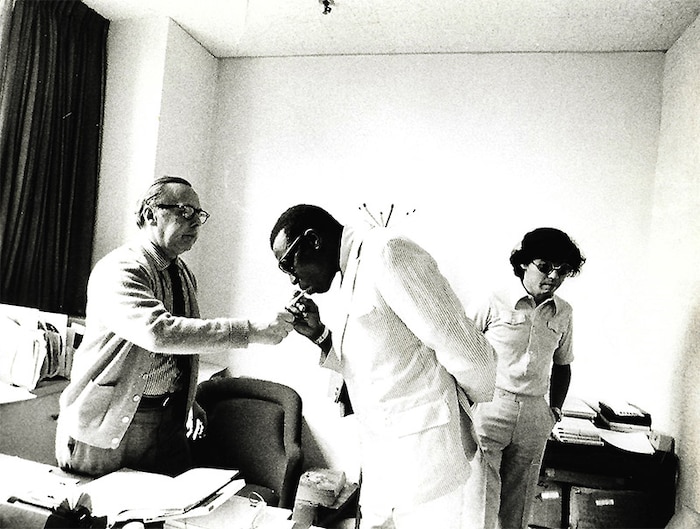
You write in your biography that you were influenced by, and started to play the bass because of Milt Hilton who you saw playing with Louis Armstrong when he came to Japan in 1953.
Yeah, that’s right. It was in a theatre called Azumageki, and next door was a strip club called Azumageki Burlesque and I read they were looking for a bassist. I thought it was perfect, and swiftly asked my mother to get me a bass and I took it there. That was my first time.
Did you play an instrument before that?
No.
Wow. Were you listening to jazz at the time?
No. That was the first time. I just knew that this was it. I thought, “Whoa, that guy is fast.”
You suddenly had a bass to hand. How did you learn it?
I went to the strip joint and asked, “It says you're looking for a bassist, are you hiring?” And the bandleader replied, “Yeah, can you play?” and I said, “I have no idea, but I saw that you were hiring and I went and bought an instrument. I just really want to play bass. I went to see Armstrong yesterday.” “That sounds interesting. Let’s hear you play.” Of course I couldn’t even make a proper sound and I had terrible blisters. “OK, I’ll teach you.” It was a strip joint, so it was like, “When the girl in the white dress comes in, play those two notes with the white stickers on them.” I was there for about a year.
So you learned how to play there.
I learned quite a bit there. Then there were these two American soldiers who would come by two times a week. They said, “We’re musicians from the military band, do you want to come?” And so I went to see them. It was amazing. There were lots of pianos, all the instruments you need, and everyone was playing jazz. It was the military band, so once they’d finished raising the flag in the morning, they were free to do whatever they wanted.
Were there other Japanese musicians going in and out apart from you?
No. After I’d been there for two or three years, and I could play pretty well, some Japanese musicians started to come to listen to the band. Apparently they were saying, “That second generation guy is amazing.” They thought I was second generation Japanese.
When a piano comes in when I’m playing bass, I always wanted to know at what moment it came in, my brain just worked that way. I’m strange, a bit crazy.
So you were trained up by the real deal. How long were you there altogether?
About four years. They had to return to America, and then I joined this band with Jun Kiyomizu on drums, and it was one of the top bands in Japan at the time. That was my first Japanese band.
Where did you play?
Mostly at cabarets.
Were you essentially making people dance?
Yeah, it was a job at a cabaret, so we had to make people dance. We couldn’t do any difficult jazz. We were a jazz band, but we would get fired if we didn’t play tango. There weren’t any venues doing jazz exclusively, they started cropping up later on.
Were there late night sessions after business hours?
There were sessions. But that was a while later. Like at “Video Hall” around Yurakucho area.
Is that more into the ’60s?
I guess so. No, actually it was a little before. When I joined (Hidehiko) Matsumoto that was at the beginning of the ’60s.
During the “Ginpari” session period?
Yeah. Everybody was at those “Ginpari” sessions. I never really went to those kinds of places. It was a bit too strangely elaborate and it was a different vein to the jazz I was doing. People like (Masayuki) Takayanagi I guess I knew of, but I didn’t think it worth joining.
Did you feel they were a bit big-headed?
Yeah, and also because they were doing drugs. I don’t like drugs. I’d go to “Ginpari” sometimes, but then I’d leave after I played.
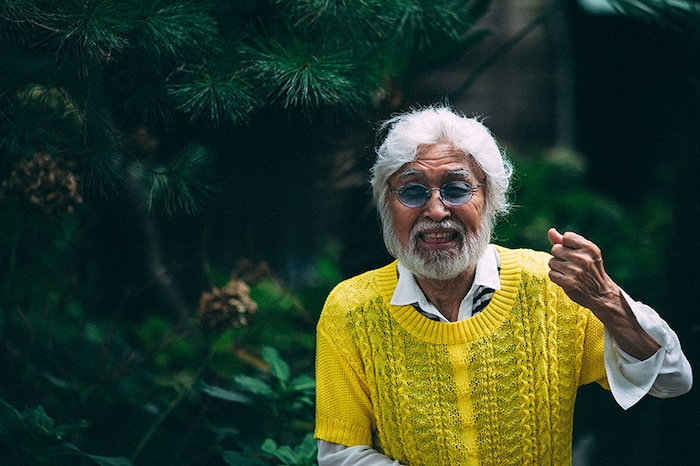
“Ginpari” (literally translated as Silver Paris) was known as the chanson cafe in Tokyo, Ginza, and the performances often centred around chansons but eventually became the session venue for young jazz musicians. They left their mark on a record, Ginpari Session, with Masayuki Takayanagi on guitar, Masahiko Togashi on drums, Masaaki Kikuchi and Yosuke Yamashita on piano, Terumasa Hino on trumpets. All names that were to represent the jazz movement in Japan thereafter. But Isao Suzuki’s name is not to be found. That said, the main members of Ginpari Session, Takayanagi and Togashi, (who played a key role in the establishment of free jazz in Japan) joined Isao Suzuki in many significant performance situations. Suzuki’s approach is one of only being connected when he needs to be.
The result of that is that you are connected to a lot of different people and places.
Yeah, I was very social.
Which is why you are known by a wide audience.
Yeah, I thought like a foreigner, so whenever I talked to Japanese people, the conversation just…
Didn’t work?
Not that it didn’t work, but... I’d just quit the band if it didn’t feel right.
You didn’t feel comfortable staying in just one scene?
That’s right. Well, if it’s a good scene. Like when Togashi and I do a duet. I’ve spent a lot of time with Togashi, and we really think alike.
Did you meet Togashi in the Ginpari period?
Yeah, around that time. The quartet we did with Sadao Watanabe, me, Masaaki Kikuchi and Togashi was really interesting.
That’s quite a combo.
The three of us – excluding Sadao Watanabe – were arguing all the time, and Sadao wouldn’t be able to break us up. He’d always say something like, “Can’t you just stop fighting?”
Is this before Sadao Watanabe left for America?
After he got back. He was considerably better then.
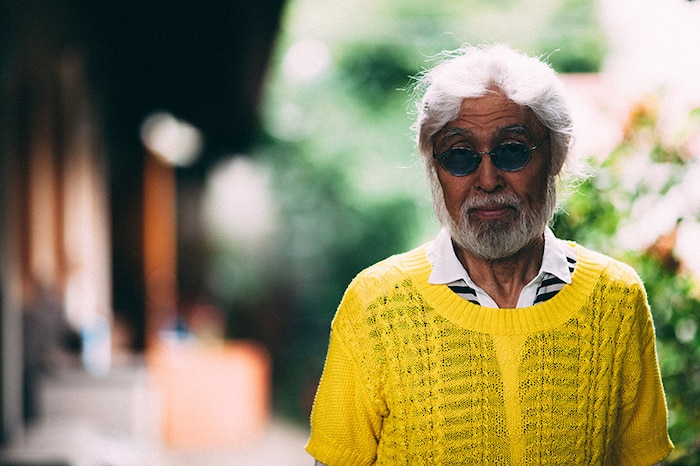
Did you never consider going to the US in the early period?
Not one bit. Even though I had a lot to do with foreign people. And plus I was doing this thing at Teruo Isono’s Five Spot.
Teruo Isono was a jazz critic and would moderate when jazz musicians from abroad visited Japan. You were mostly based at the venue run by him in Jiyugaoka called Five Spot, is that right?
Yes, after he finished moderating he would always invite the members. Art Blakey was among them. That’s how I got to play with him. Then he said, “Do you want to come round my house?” That was in ’69.
Did you make a decision instantly and go to New York?
Right away. He said to come straight away. He told me to send him material on myself. So I put together all the documents and articles I could find, cut them out and bundled them in a pile and sent it to Blakey’s house. Then, about a year after I arrived, we were in his car and I was sitting in the back and I saw these bits of paper. They were there, still bundled up. He said he never looked at them, for crying out loud. I spent ages cutting those.
You drove around the whole of America by car?
We did. We went to Canada too. It was an old Cadillac, and it had two square wheels at the back where we stuck the bass in, but the handle was sticking out. It was a nightmare when it rained.
Who were the members?
George Cables, Woody Shaw, Ramon Morris, and myself.
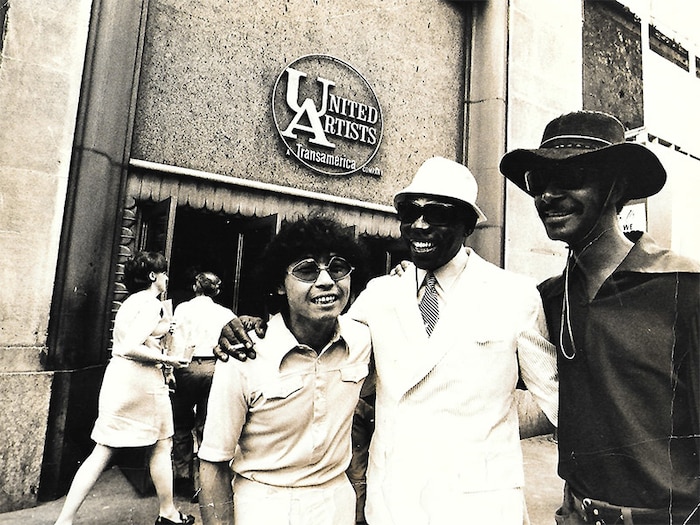
Did you ever feel you were looked at awkwardly as a Japanese person in New York at the time?
There were times, yes. There were times but I wasn’t seen like that anymore. They were more like, “This guy is good, a little different.” Elvin Jones and Philly Joe (Jones) are quite loud with their bass. If you can’t play, it doesn’t work. So Elvin and I would play a duo together. Art Blakey would too, and we played everywhere.
How was everyday life in New York?
There was a shop called Guitar and they would have new guitars in every day. I did duos and trios with Jim Hall and Kenny Burrell there. The owner there loved me and told me, “If you want to play guitar, you’ve got to play with lots of guitarists.” And I did, one after the other. I became known like that. So I had the chance to play with a lot of people. I was also doing a band with Elvin and Duke Pearson, Philly Joe’s band, and also Lee Morgan’s band. The word would just spread saying, “That Isao’s pretty good.”
Was the audience mostly black?
Yeah, they were mostly black. Because Art Blakey could only do places like that. He couldn’t appear in white clubs.
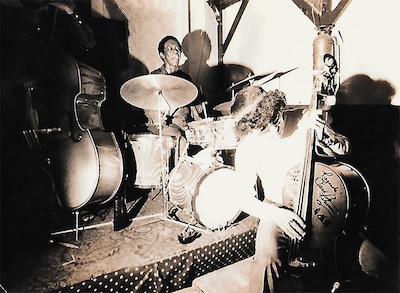
Isao Suzuki spent two years from 1969-70 in New York. He continued to play sessions intensively and toured the US and Canada with Art Blakey’s band. He was surrounded 24/7 with music, appearing on TV as the bassist for Ella Fitzgerald or playing together with Jim Hall in his New York apartment. Within two years he had played with countless musicians. Instead of going to music school, Isao Suzuki jumped straight into the heart of the New York jazz circuit and was accepted.
Why did you decide to come back to Tokyo?
I was planning to stay longer. But then, in the airport on the way to a concert in Canada, Art Blakey got busted for cocaine, and he didn’t know how long it would take him to get out. Woody Shaw and those lot, they didn’t have any money. I had to pay for them to get back to New York. It was bad. I didn’t see any point going to New York, so I got a direct flight from Canada to Tokyo. Also because my passport was about to run out.
How was it when you got back to Tokyo?
I was somewhat dazed for two or three months.
Did it take a bit of time before you could begin playing music again?
Yes, and then I joined Five Spot again. I was there for a while and then I started playing other places.
And you formed a band again?
Yes. I formed many. I also joined a lot of bands. Like George Kawaguchi’s band. Oh yeah, and the vocals, the vocals were always really bad, also because I had been playing with the likes of Ella [Fitzgerald] and I thought I’d teach them. And sure enough, people came. Hibari Misora came too. She was really great. Her English was brilliant too. Though I wouldn’t know, I didn’t know any English.
But she sang in English, right?
The pronunciations, they were all taken as sounds. English sounds. She pronounced very well. Hibari’s pronunciation was way better than any of the Japanese singers singing in English. She was very good.
What was the production like of your solo work Blow Up?
That was after I’d come back in ’73. I met a friend of [Rudy] Van Gelder back over there, I forget the name, it was a German-like name so it was difficult to remember, but he would do all the mic settings and mix downs. I’d go over almost every day I didn’t have to work.
Rudy Van Gelder was the master of recording engineers in jazz.
Yeah. It was right next to New York in New Jersey. Sam Jones and trumpeter Thad Jones were all based in New Jersey. I met Duke Pearson there and I stayed at his house for a while. Then Van Gelder’s studio was close by, so I would go frequently to check it out. Things like where it’s best to put the microphone.
Van Gelder taught you?
Yes, he did. Everyone thinks you put the mic on the outside, but actually you put it inside. I checked everything from the sax to the piano, how it’s all set up, and then I made Blow Up.
So you were the engineer for that.
I did everything. Till now, I do everything myself.
What were you thinking about when you made Blow Up?
I just wanted to make a sound that’s never been heard. So, I never told anyone about what I’d learned with Van Gelder. Not even [Takeshi] Fujii from Three Blind Mice.
It’s never good to get to a point where it becomes boring... You have to be amazed by it all the time, up until the very end. That’s the hard part.
That album sold exceptionally well for a jazz record at the time, did you have a feeling that it would sell while you were making it?
Yes. It was really different from anything else. Before I made the record, I listened to all the jazz records I had, then listened to mine. Which one is better sounding? Where does it sound better? Does it need more weight? Does it need to cut off more abruptly? I compared them and I would raise the level just about to where the needle would jump, and the red goes all the way up. Because it drops after track down. That’s something I learned from Van Gelder.
So even if the input level goes over when recording, it still works.
Yeah, the needle doesn’t skip. Because once you’ve mixed down, it drops. I gave that real consideration when I made the record. I really learned a lot. That’s why Blow Up has such a wide range of sound and it feels heavy. There is also this sense of speed. The mic tends to float normally, so it picks up the total sound. I used three pin-point locations. It’s a little difficult, but you have to do it to that extent to get a good sound.
So you are responsible for everything from the composition to the playing to the mixing.
For Self-Portrait I even played everything myself. That was a real challenge.
Do you know of any other jazz musician in Japan at the time who played all the instruments and layered multiple recordings?
No. Definitely not. Normally, jazz musicians would just go into the studio and record and that was that. They just play, listen, and if the content is good that’s all fine. So it’s not about the sound.
If the solo they play is good, then they are satisfied.
Right, and it shouldn’t be like that. This is how a record should be made.
Self-Portrait was released in 1980, and it is an album Suzuki himself would pick out as one of his favourites from his extensive discography. It is an album where he himself played all the instruments – from the drums to the keyboards to the vocals – and then recorded, edited and mixed the result. The work distinguishes itself from jazz of the period, but jazz was also changing at the time. The early ’80s signaled the arrival of hip hop, and artists like Herbie Hancock were creating jazz with an electro twist. Suzuki surely sensed something in the air. Without ego and openly looking (and listening) to the world outside of jazz, Suzuki’s approach to music and performance makes even more sense in a contemporary context.
Was the recording of Self-Portrait done on multi-track tapes then?
Yes. It was just dubbing, dubbing.
You did all the editing of the tapes too?
That was a challenge. How I managed I don’t know, I couldn’t do it now anyway. It took a week to make one song. I spent a month cooped up doing it every day.
And yet you still wanted to do it. Why?
I felt I needed to express my feelings.
Not using other musicians?
No, I wanted to convert my own feelings into sounds. That kind of feeling. There is jazz, there as well as some sort of nursery rhymes, various things. My feelings for China are also expressed, the Chinese fiddle is also featured.
There are an astounding number of instruments.
Around 20 different kinds.
Did it ever become a chore to learn all these other instruments?
It never became a chore. You just know where to put pressure with the fingers. I’m fast at mastering instruments. I know now, in order to play bass well, you have to know a lot of instruments. When a piano comes in when I’m playing bass, I always wanted to know at what moment it came in, my brain just worked that way. I’m strange, a bit crazy.
In terms of jazz musicians that might be rare, but it is unique and a very contemporary stance.
I didn’t try to make it unique, but I knew I had to go this far in order to make something good. If you want to make it to the cream of the crop, you have to take it that far. It’s a really difficult task. But we all did it.
That’s why you are all still in the game, and you are able to do new things with the likes of DJ Kensei, Mitsu the Beats, Killer Bong, who are all talented people outside of the jazz realm. The requirement to make people dance like you had to do in the cabaret house band back then is essentially what is expected of DJs right?
In those kinds of situations, you have to. Serious listening is another thing, and there has to be a setting for that too. It’s never good to get to a point where it becomes boring. You have to make it not boring to you. You have to be amazed by it all the time, up until the very end. That’s the hard part.
Header image © Pattern Repeat